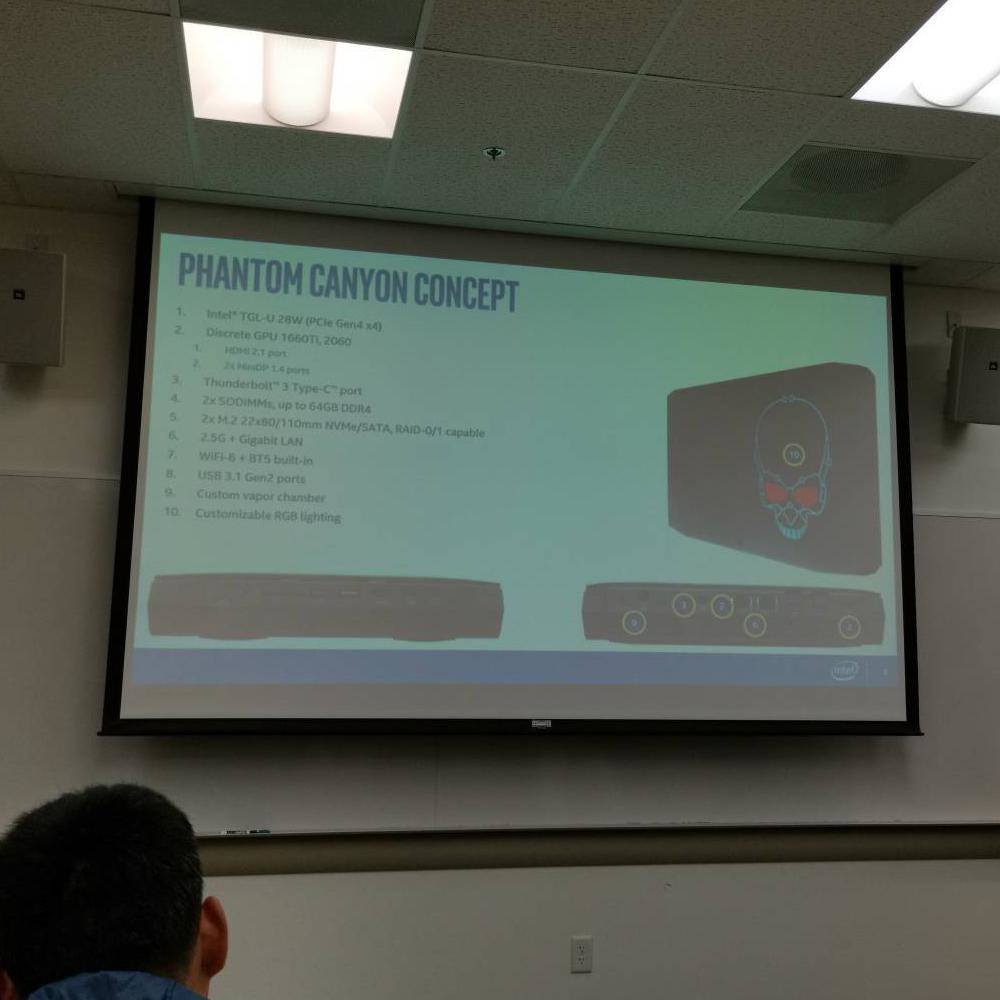
A new round of leaks is revealing more conceptual details about Intel’s next-generation “Phantom Canyon,” Next Unit of Computing (NUC) gaming PC, and it does initially look to be very promising. The ultra-compact gaming PC could feature improved Intel processors and options for Nvidia GPUs under the hood when launched in 2020 or 2021.
According to leaked photos gathered together by Techpowerup, the incoming Phantom Canyon gaming PC might feature the 28-watt Tiger Lake U series chipset, and PCIE-Express Gen 4 technology. Elsewhere, there is also the possibility that it could be powered Intel’s 12th-generation integrated (not discrete) Xe graphics architecture — alongside options for the GTX 1660 TI, and the RTX 2060.
Other suggested specs include onboard options for Thunderbolt 3 USB Type C ports, support for up to 64GB of DDR4 RAM, as well as support for the newer Wi-Fi 6 standard. There’s also a custom vapor chamber, and support for customizable RGB lighting. That would be an improvement from the glowing skull on the lid of the current generation Hades Canyon NUC.
Importantly, the leak points out that Phantom Canyon could launch in late 2020 or early 2021. That means it will succeed both the current Hades Canyon model as well the incoming “Ghost Canyon” for later in 2019. As a reminder, Hades Canyon features options for the Intel Core i7-8809G processor and AMD Radeon RX Vega M GH. Ghost Canyon, meanwhile, features the upgraded to both the Core i9-9980HK processor, and other discrete graphics which was not listed.
An upgrade to the newer Tiger Lake U series chipset, integrated Xe graphics, or options for the RTX chipset is a big step for the NUC series, and it looks great for 2019 standards — especially for such a compact PC. It not only brings more general computing power for day-to-day tasks but also leaves more room for gaming. With the option for RTX graphics, Phantom Canyon can also leverage the advantages of ray tracing.
However, by late 2020, and 2021, when this new NUC launches, AMD could also launch the Navi 23 graphics card, and Nvidia may release the Ampere. It also is surprising to see that Intel is not using its own discrete Xe graphics, which it is considerably hyping. There are many rumors that could be left to come, but Intel’s NUC could be outdated once it hits store shelves.


